Tragic but interesting tales from past County lives
Administrator | Feb 23, 2023 | Comments 0
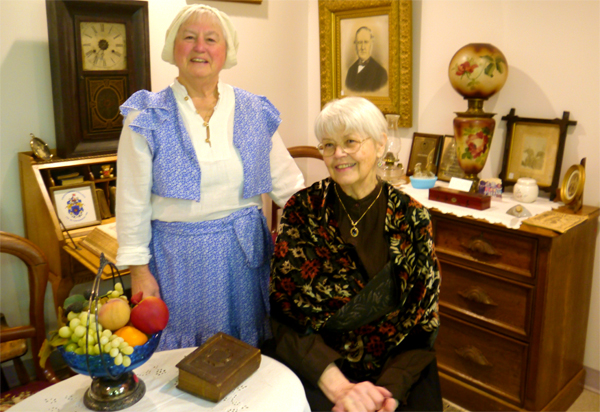
Ancestor Catherine Sprague (Beverly Sprague) and ancestor Jane Whattam Walmsley (Darlene Walmsley).
By Sharon Harrison
Catherine Sprague’s husband, Samuel has gone missing from a trip to Montréal. It’s almost the summer of 1816 and he left in the spring. She is worried, as he has usually returned home by now.
Visitors to Ameliasburgh’s Marilyn Adams Genealogical Research Centre (MAGRC) and the Seventh Town Historical Society on County Road 19 were taken back in time this week when they were introduced to the past lives of several County ancestors, that gave a tragic, yet fascinating snapshot from their past.
The day’s events formed part of County Museum’s Flashback February week-long celebration of Ontario Heritage week.
In the morning, Beverley Sprague, dressed in appropriate-era dress, shared the story of Catherine Sprague and her plight as she searches for answers surrounding the disappearance of her husband Samuel, who was floating a skid of logs from Northport to Québec in the early 1800s.
The afternoon welcomed Darlene Walmsley, who depicted Jane Whattam Walmsley, as she recounted the story of her son William’s 1896 disappearance in Madagascar.
Volunteers were on hand throughout the day showing folks some of the records the centre holds, explaining what the centre does, as well as how the centre came to be.
In Sprague’s story of 1814, Catherine, Samuel and their six children moved from Hampstead, New York to Demorestville to start a new life. Later, a seventh child was born in Prince Edward County.
“We kept getting these letters from Benjamin Smith who lived in Demorestville in the Quinte peninsula telling us about this wonderful place, the logging, the lumber industry was just burgeoning, and they needed helped and it was just a wonderful opportunity,” explains Catherine.
Samuel had worked for the naval yard in Hampstead building ships and he did logging and was also a carpenter.
The journey overland was a long one from Hampstead to Oswego, where the family of eight then boarded a Durham boat up the Oswego River across the Lake Ontario to the marsh front of the Quinte isle.
“It was an arduous journey and the Durham boat was not made for passengers; it was a cargo boat and it had one large sail that was on a hinge, and the hinge would go down so the boat could get under the bridges,” explained Catherine.
She said there was very little shelter, just two cabins, one belonged to the captain and there was another small cabin to get shelter.
“When it got really rough, I would take the two youngest children and we would seek shelter in the cabin,” she said. “Samuel would take the rest of the children, and the only shelter were the tarpaulins that were on the deck of the ship.”
They arrived in Prince Edward County around 1810 where the family bought a plot of land on the marsh front to farm as their form of living, growing crops in the summer, and in the wintertime, Samuel and the older children logged.
“At that time in Demorest village, trading and bartering were mostly what we had to do to get the things we needed; cash was very scare, but Samuel being a good entrepreneur knew that there was cash in the lumber industry.”
She describes how he and the boys would cut logs in the wintertime and they would roll them out onto the ice between the marsh front and the big island.
“The pine logs would be on the bottom, and they would cut oak trees and they would square them and put those on and build a raft and lash the raft together with willow twigs,” she said. “They would affix it with a sail and a small cabin for shelter, and a stove for cooking and there were barrels of provisions on for the trip to Montréal.”
She notes they had a small row boat along the side, so that they could row ashore for whatever they might need.
Samuel headed off through the marsh front through Telegraph Narrows, Long Reach, down past Kingston and out into the lake, and then down to Montréal.
“There, he would sell the lumber and bring back cash, he would come back by the Durham boat and he would bring back cash which was nice to be able to have some cash.”
Samuel left for Montreal in the spring 1816 and never returned.
“I am so worried and I don’t know where he is,” recalls Catherine. “He was a wise enough to know this was a very perilous journey, so in 1813 he wrote a will and made me the executrix, and our oldest son and Benjamin Smith were the executors.:
Catherine was to be left the farm, the furnishings and the stock as long as she was his widow. He also made provision for the children’s education.
“I haven’t heard from him and I don’t know what he’s at or when he might be home, that’s why I am asking if anybody had heard anything or had any news,” said Catherine.
Catherine was told that perhaps Samuel had drowned or perhaps he died of typhoid.
“It was lost somewhere; we really don’t know where he was lost.“
“If he does not come back, I will just have to do the best I can,” she says. “I am very lucky that my older children are around as are good friends the Demorests and the Smiths and the Mordens will be there to support me for as long as I need.”
The mystery of the disappearance of Samuel Sprague has never been solved.
Beverly Sprague explains that Catherine Sprague was her seventh generation grandmother.
While she says they do not know what happened to Catherine, she notes a local story where it is believed there is a mound on the side of the road near to where they first came ashore on some marsh front on the land near Northport.
“It is said that you never worked that land because it was a burial site, and there are a few rocks that are there,” explains Beverly. “I think that might be Catherine and the children, but Samuel did never return.”
Beverley explains that Catherine Sprague may have been related to Benjamin Smith and might have been an uncle.
“Benjamin Smith bought a saw mill in Demorestville, along with William Demorest, so that’s were Samuel Sprague would have worked.
Catherine and Samuel were married in Hampstead, New York in 1796.
Beverly said they are tragic stories, but also very interesting stories.
“There is no happy ending to this story, as there were many unhappy endings, but I just would have liked to have known more about Catherine herself and how long she lived, did she continue on with the farm as there’s that gap where we have no records.”
Beverly Sprague’s connection to Marilyn Adams UE stems back to their time together in Durham where they were both teachers, and they also discovered they both came from Prince Edward County.
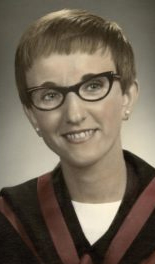
Marilyn Adams
She recalls that sadly just before Marilyn was about to retire, she was diagnosed with cancer and was told she didn’t have long to live; she was retired just eight months before her death.
“She bequeathed us her house on Rednersville Road, the contents, and the land to the Seventh Town Historical Society because she never married, she had no children and she was an only child,” explained Beverly.
Adams had hoped originally her house would become the centre, where Beverly notes it wasn’t suitable for several reasons, such as having no parking, and climatically it didn’t suit, and so the house was sold.
“We are one of the few free-standing genealogy centres, we pay our own heat and hydro and we take nothing from the County.”
While MAGRC has been at the purpose-built site for 30 years, Beverly has been volunteering at MAGRC for around 10 years.
“It’s my kind of little thing to Marilyn, and she didn’t get the retirement that she wanted, and I’ve been lucky to have it, and so I’m going to try and carry on a lovely connection back to her,” said Beverly.
“I think she would be really pleased and proud at what’s gone on: what a wonderful thing to do, she lives on.”
Marilyn Adams died at age 55 in May 1990. She was the fourth great granddaughter of John Weese UE, the first permanent settler of the Township of Ameliasburgh, and perhaps also of Prince Edward County.
“I like to tell her story and I’m the one here that knew her,” adds Beverly.
Marilyn Adams Genealogical Research Centre and the Seventh Town Historical Society are located at 528 County Road 19 in Ameliasburgh and are open to the public on Tuesdays and Thursdays.
The goal of MAGRC is to collect and preserve family histories for the benefit of family historians and genealogists. The collection includes historical artefacts, books, letters, genealogical research, maps and more – including over 1,600 family genealogies.
“We do have some interesting collections; we have the Victorian cross collection –and I believe one of the only copies of the Victoria Cross recipients on this side of the Atlantic- military collections, the instrument room, as well as artefacts from Marilyn Adams, among many others.
“It’s one of the County’s best kept secrets,” she adds.
The facility is open to all, whether to research a local family or a property or just learn more about what MAGRC do, where it’s an easy place to have many hours pass by to the fascination of local history and genealogy.
The volunteers are friendly, fun folks and offer a warm welcome. As a volunteer-run organization, they also welcome new volunteers if you have a few hours to spare, which will allow them to open a few more days each week.
Recordings of both Catherine Sprague and Jane Whattam Walmsley ancestral stories can be found on the Marilyn Adams Genealogical Research Centre YouTube channel. MAGRC can be found at seventhtownresearch.com.
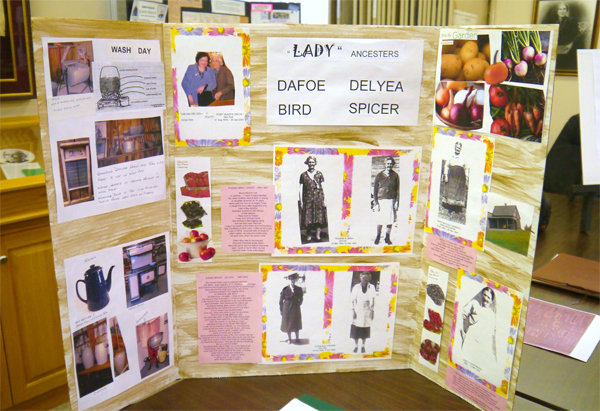
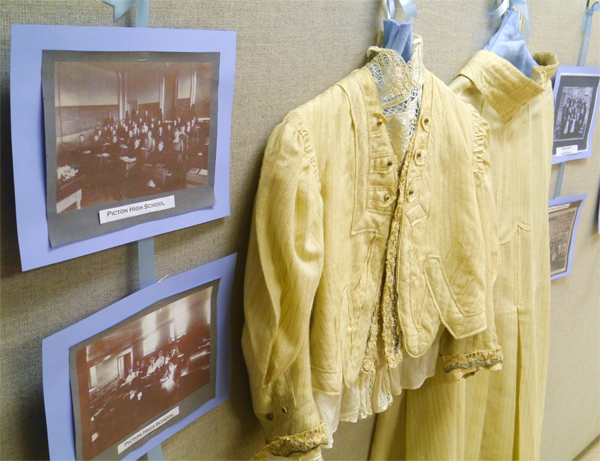
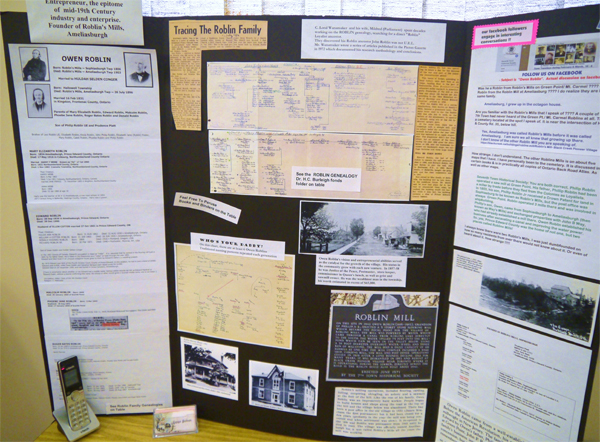
Filed Under: Featured Articles
About the Author:

































